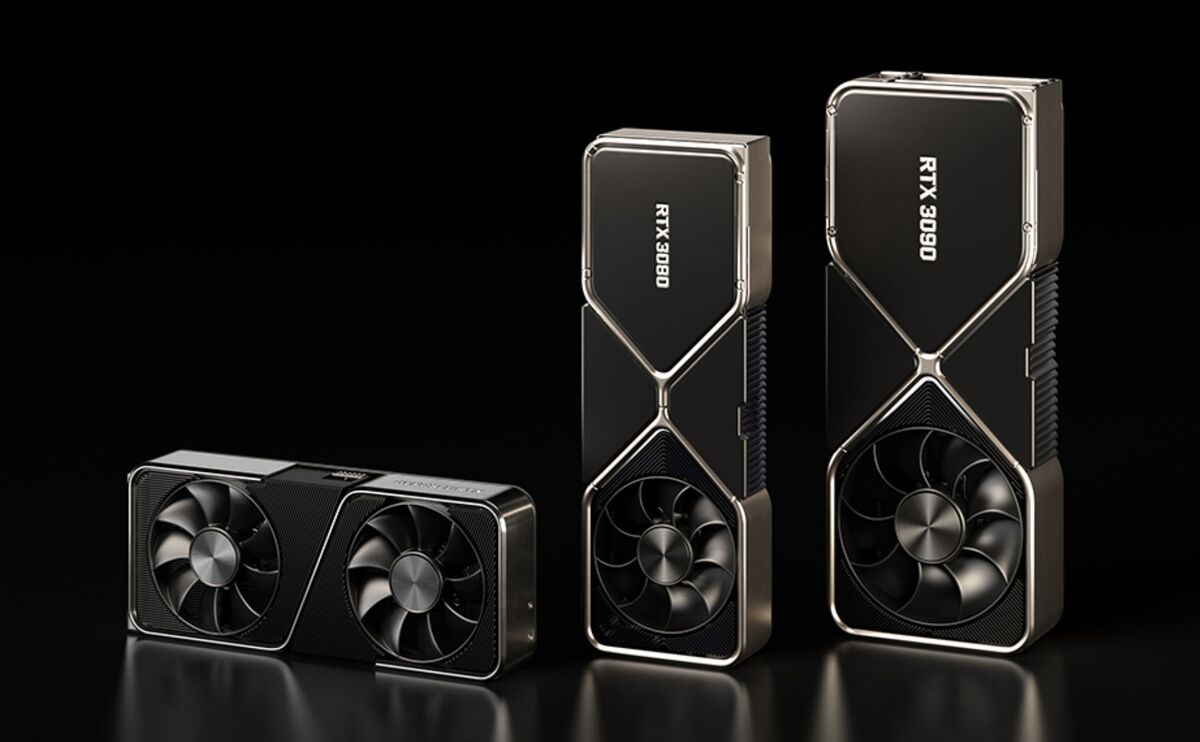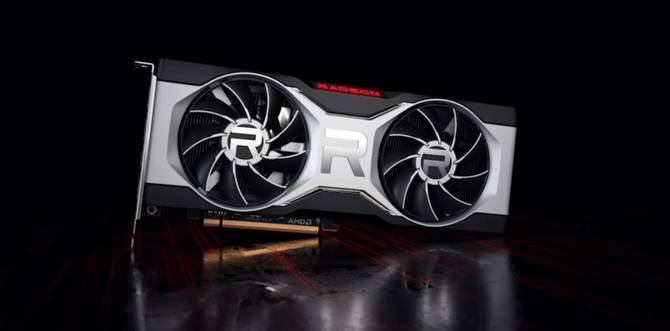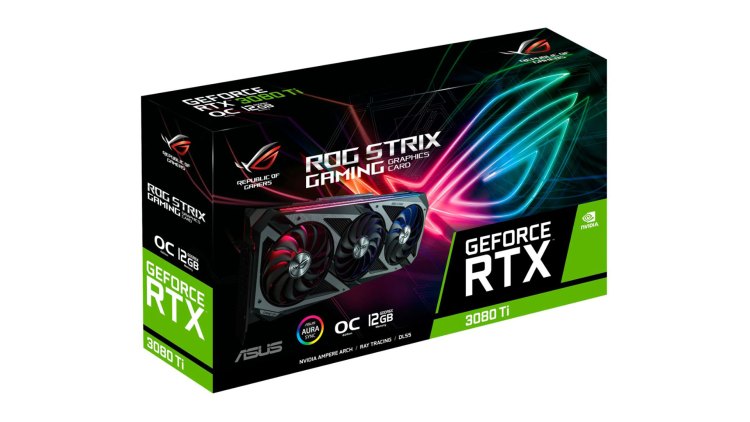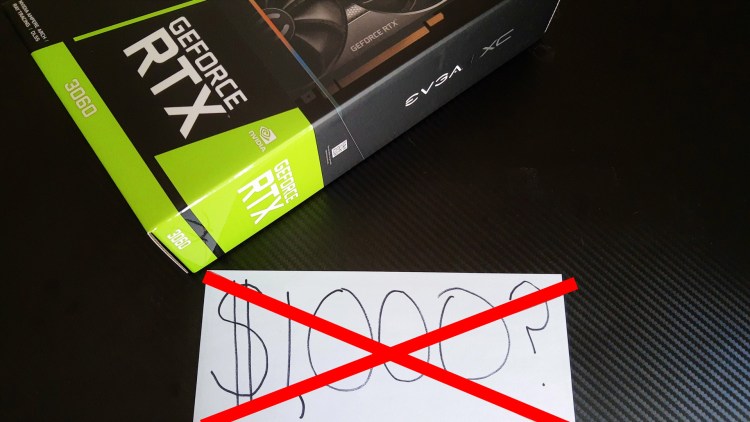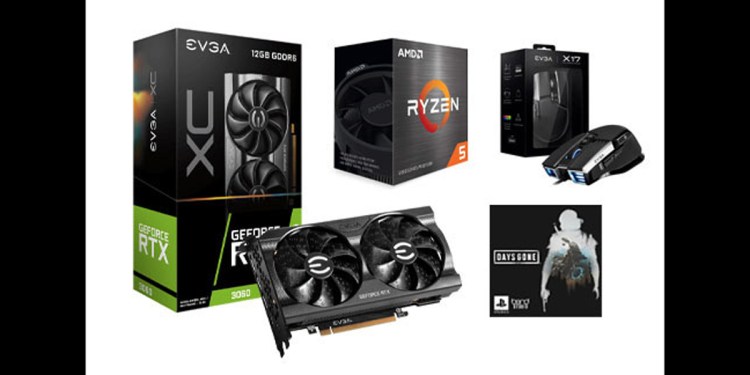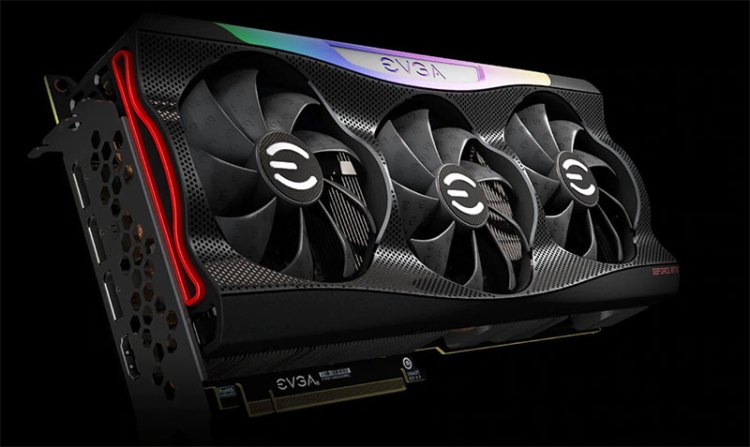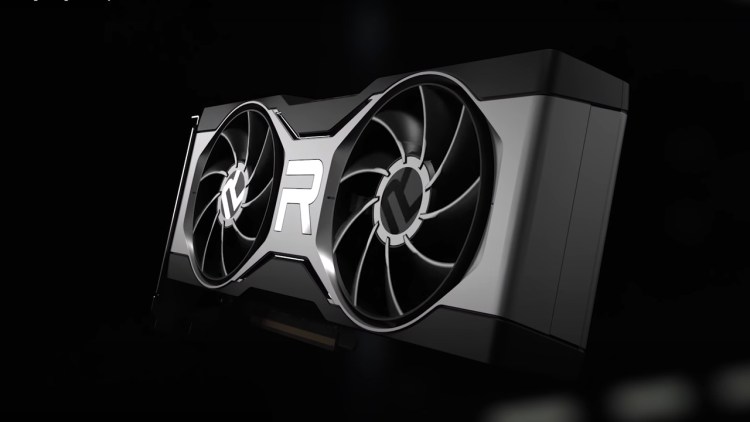It feels like we’ve exhausted our news coverage about endless shortages over the past year, but the situation sadly still hasn’t even remotely improved to a point that consumers are happy with. Graphics cards still remain scarce for a number of reasons, and the holiday season is rapidly approaching. We figured now was a good time to provide a comprehensive update about why the graphics card shortage is still ongoing, and what to expect through the rest of the year and into 2022.
We spoke directly with several suppliers and pieced together information from other industry sources to gather a sense of what’s going on. We’ll briefly cover manufacturing, component shortages, supply chain bottlenecks, consumer availability, and why prices are so high. There’s also a lot of speculation about what could happen in 2022, with some CEOs claiming there will be significant improvements to shortages. Some industry players are even speculating that a crash could eventually happen, resulting in oversupply and reduced prices. While we can’t predict the future, there are some very interesting possibilities to discuss based on this info.
Before we start, we want to briefly mention the primary sources we used to gather this information. While companies like AMD, Nvidia, and Intel need no introduction, the rest may not be familiar to all readers. For the scope of this piece, we spoke directly with Cat Camerford, Chief Merchandising Officer at Antonline, an online retailer that’s been selling graphics cards for years and other tech products for decades. For our other direct contact, we spoke with Jorge Percival, Director of Marketing and Product Development at CLX Gaming, a custom PC integrator.
We also spoke to several sources within Micro Center who asked not to be named. Lastly, we have some information from YouTuber Moore’s Law is Dead and public statements from several of the guests that appeared on his podcast which work in industries related to the production and sale of graphics cards. These include Daniel Nenni, a businessman in the semiconductor industry and the founder of SemiWiki and Ted, the owner of retailer and custom PC builder Silver Knight PCs.
Where are the graphics cards?
The ongoing supply issues have led to a lot of confusion surrounding the availability of the popular current generation graphics cards. The answer to this problem is not a simple one, but overwhelming demand is the primary culprit. Still, the consistent lack of stock has led many to falsely believe there are issues with manufacturing.
This is not necessarily the case, at least in regard to TSMC’s capacity to produce cutting edge silicon wafers for chips. The problems also lie with raw material and component shortages, which relate to supply chain issues rather than simple problems with assembling graphics cards. The number of reported issues are difficult to keep track of at this point, yet despite all of this, companies are still reporting record earnings. This reinforces the notion that while supply could be better, high consumer demand is what continues to fuel the graphics card shortage rather than supply being lower than normal.
The supply chain issues have also created a consequential side effect due to the potential for massive profits by selling graphics cards. As noted by Daniel Nenni, concerns over running out of critical components and materials have caused some companies to stockpile surplus, further fueling shortages for competitors. Until enough companies feel confident in their built up “safety” supply, component shortages will continue.
Still cashing in on coins
Additionally, there have been suspicions that AMD and Nvidia are selling massive quantities of gaming-branded graphics cards directly to cryptominers. While we cannot confirm this, miners are still purchasing gaming graphics cards one way or another in order to turn profits. As a means of diverting mining demand to other product lines, Nvidia started selling a CMP series of cards based on Turing (RTX 20 Series) silicon earlier this year, which it claims does not impact gaming.
Nvidia also began selling LHR graphics cards with built-in limiters to make the models less appealing to miners. However, we don’t know how many manufactured cards are LHR models, and miners have been able to mostly get around the limiters at this point. Additionally, if you factor in the component shortages, it can be said that CMP cards are having some effect on the ability to manufacture more graphics cards for gaming. With crypto prices remaining high, we can conclude that it will affect availability for the foreseeable future.
If all of this wasn’t already complex enough, there are also the complications with cargo ships unable to get into ports due to Covid restrictions that have slowed down procedures and resulted in understaffed port authority crews. We reached out to a contact that works at the port of Los Angeles who confirmed this, but the long line of cargo ships idling off the coast are telling enough of the situation. And graphics cards could potentially be on those ships.
The availability we do have
The graphics cards that do make it to retailers continue to fly off shelves regardless of the type aside from the grossly marked up models that can’t be resold for much, if any, profit. These can currently be found in stores like Micro Center and online in some cases. The high pricing makes it no coincidence that the most premium high end models are available this way, which leads us to the question of whether or not higher margin graphics cards and GPUs are being prioritized for manufacturing.
In regard to GPU die availability, it remains unclear as to whether higher margin models are being prioritized in disproportionately greater numbers. Based on our conversations with CLX and Antonline, we gathered that it is possible to acquire all models of graphics cards, but only in small quantities. However, when we spoke to our contacts at Micro Center, they commented that RTX 3070s and 3080s were not coming in as often as they used to after the more expensive 3070 Ti and 3080 Ti cards launched.
When asked about how regularly graphics card shipments come in, our contacts all had different answers. Antonline noted that it is able to restock about every week and a half or every two weeks. CLX noted that its inventory is updated throughout the week. Our contact at Micro Center stated that shipments come in regularly on truck deliveries, which stores receive multiple times per week. The takeaway is that graphics card restocks are now consistent, though shipment quantities remain low for most retailers.
This is a different scenario than what suppliers were dealing with earlier in the year. CLX stated that “GPU availability is slightly better than it was earlier in the year – especially as cryptocurrency stabilizes and there’s less of a rush for components” and that “…demand isn’t what it used to be. However, we’re still not out of the woods yet.” Antonline noted that its early GPU availability disappeared so quickly that customers likely never even saw it in the first place. This was due to bots, scalpers, and actual end-user customers watching for availability and buying it up immediately. As for Micro Center, there were the long lines of would-be customers camped outside stores for months when the RTX 30 and RX 6000 Series first launched. However, as we noted during the launch day for the AMD Radeon RX 6600 XT, lines are no longer common aside from the busier stores.
Why are prices so high?
The simple rules of supply and demand are in full effect for graphics cards, and everyone wants a piece of the pie. However, there are legitimate reasons for why most products are priced higher than MSRP this generation. The complex situation has also created a degree of confusion among consumers, with anger over high prices oftentimes directed at retailers since they serve as the primary point of contact for consumers in the distribution chain.
To understand how price points work, it’s important to understand supply chains and distribution models. For components as complex as graphics cards, there are tremendous numbers of companies involved in manufacturing alone. Add in all of the distributors and logistics, and there are a lot of hands that graphics cards must pass through before they end up on shelves for you to buy. There are many opportunities for small price hikes to add up. Manufacturers typically try to predict all of these potential issues and come up with a standard MSRP, but we’re living in unprecedented times where there’s a lot of uncertainty, and subsequently, high prices. Though we can certainly attribute some greed to the situation as well.
As noted by Silver Knight PC, some distributors are taking advantage of the situation to sell special edition graphics cards at, or near, scalper prices. Unfortunately, we weren’t able to pinpoint exactly where in the distribution chains these markups are mostly happening, as prices vary from client to client and are confidential information.
There’s also the matter of bundled products with graphics cards, as made famous by the Newegg shuffle and the explosive Gigabyte power supplies. However, consumers apparently aren’t the only ones being forced to buy more than they want. Silver Knight PC also noted that some distributors were requiring components like power supplies to be purchased with graphics cards, creating problems of oversupply for retailers. This doesn’t appear to be standard practice for all distributors though.
We asked Antonline about whether it was required to do this and were told it was not. When asked about why Antonline chooses to sell graphics card bundles, it explained that it does bundles to reduce the likelihood of scalpers and miners being interested in the additional packaged items, whereas a new mouse and keyboard plus a power supply or CPU are things gamer can use. While Antonline understands that bundles aren’t what every consumer wants, the practice has improved availability and allows it to sell the graphics cards for MSRP alongside the other items.
There are many factors at play, but most of the problems stem from the impacts of Covid from what we can tell. Considering how there’s no clear end in sight for the pandemic, we don’t expect prices to fall anytime soon. Additionally, the prices of raw materials (such as copper) and components (like GDDR6 memory), increased shipping costs, tariffs, fear of inflation, and greed are all keeping graphics card prices high this generation.
When will things get better?
The burning question to address first is that availability is not going to get better this year. CLX was confident in this, saying that “the holiday season will be another rough time for availability, especially as we see demand pick back up. People tend to make larger purchases during the holidays, like gaming PCs and consoles. As a result, the GPU market will likely experience more shortages which will continue to impact the industry well into 2022.” Cold weather will also drive more people back indoors to do things like game, and many will feel inclined to buy new graphics cards to improve their experiences.
As long as consumer demand remains high, we can also expect to hear about more component shortages until companies are able to significantly improve supply chains. According to Nvidia, Intel, AMD, and TSMC, that isn’t expected to happen until late 2022 or possibly 2023. To get additional perspective on the situation, we asked CLX about the shortages.
“Things are definitely going to continue to be tight, and I don’t foresee supply returning to pre-COVID levels any time soon. We expect things to get better, but demand is still very high right now, and companies are playing catch-up. It’s important to understand that anyone making components is also focused on building reserves for the future. During the last year and a half, everyone went through massive reserves and hasn’t been able to get back to a comfortable spot. That’s going to take time,” said CLX.
According to TSMC, some companies are also currently making the situation artificially worse by stockpiling chips and other components to an excessive degree, leaving supply tight for other manufacturers. Industry analyst Daniel Nenni believes this will eventually force companies to unload excess supplies, and if the overall manufacturing capabilities of the market increase too quickly before companies are able to utilize excess supply, stockpiling practices could cause situations of oversupply and a market crash.
While we can’t say for sure what’s going on with the overall market, it seems there are imbalances in supply chains that are creating confusion about what needs to be prioritized to fix the global chip shortages. Nenni believes the current emphasis on building more semiconductor fabs in the US and Europe is overblown. Manufacturers like TSMC are producing chips in record numbers according to earnings reports, and Nenni further asserts that the graphics card shortages are more closely linked to weaknesses in the supply chains that were exposed by Covid.
Indeed, until the complications brought on by Covid are alleviated, we can expect more of the same issues in supply chains until suppliers are able to implement long term solutions. And if these are over-implemented, there will be a higher risk of an inevitable crash. While oversupply and low prices would be great for consumers, companies are certainly looking to avoid that without leaving all of the current demand unaddressed. It’s a difficult situation to solve, but it’s clear that global demand for computer hardware will remain high for the foreseeable future. Companies like Antonline and CLX continue to see incredibly strong computer sales, and booming crypto prices are also fueling the graphics card shortage.
The rundown and the recommendation
For all of the aforementioned reasons, and more we didn’t even touch on, we’ve come to the conclusion that it will simply take time for the market to adapt to the current graphics card shortage. Supply simply won’t be able to catch up to demand unless something radical happens such as a crypto crash, a substantial decrease in Covid cases, or a crash due to oversupply. Unfortunately, none of these things seem imminent at the time of writing, and if an oversupply crash is in the making, it’s still a ways out, perhaps due for late 2022 or 2023.
So what should you do if you want a new graphics card now? Well, the answer is quite obvious. If money is a major limitation and you can only afford MSRP prices, you might just have to wait this generation out unless you’re willing to put in the time to track down a graphics card.
From what we understand, visiting a brick and mortar store like Micro Center that’s receiving regular shipments is probably your best bet if you’re strapped for cash. However, even then, you may not find the card you want and will likely need to pay a small premium for the marked up AIB models like ASUS, MSI, etc.
If you’re more flexible on your budget, you could try the same thing and just pony up extra cash for a high end model, or buy a bundle online. There’s also the option to just buy a prebuilt or custom PC/laptop where you can find better availability and get the graphics card you want.
Lastly, you could just pay the scalper prices and get exactly what you want. But you should only do that if you’re okay with the possibility of pricing and availability returning to normal in a year’s time. Additionally, there will likely be a new generation of more powerful graphics cards from AMD, Nvidia, and Intel by then. A year is a long time to wait though, and there’s no guarantee of where things will be with the graphics card shortage by then. At least you can make an informed decision at this point.
We’d like to thank Cat Camerford at Antonline and Jorge Percival at CLX for their time providing answers about GPU availability.

